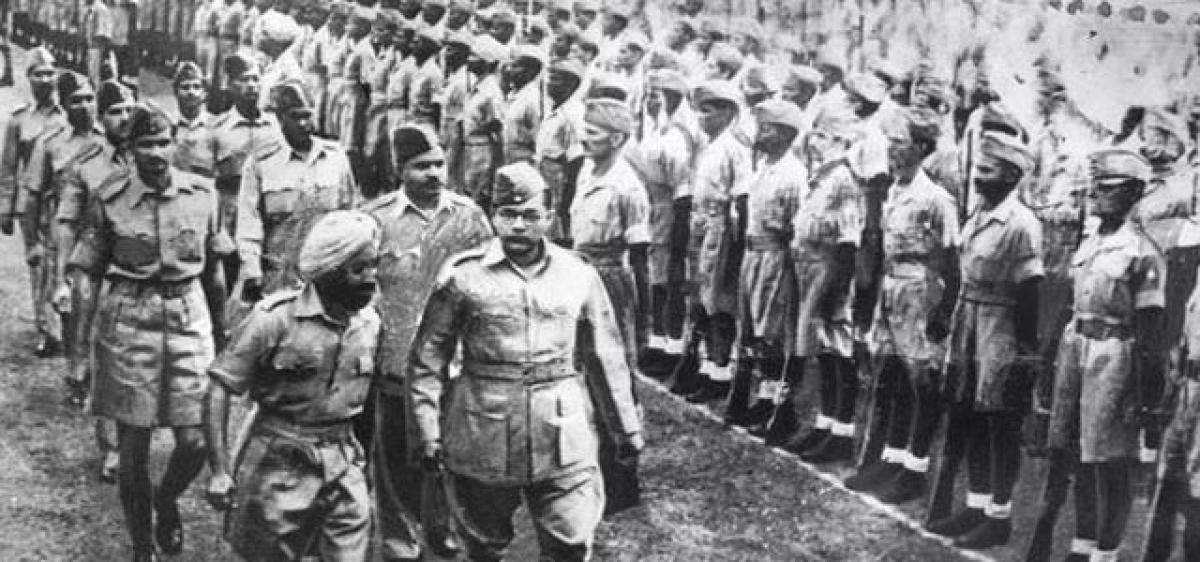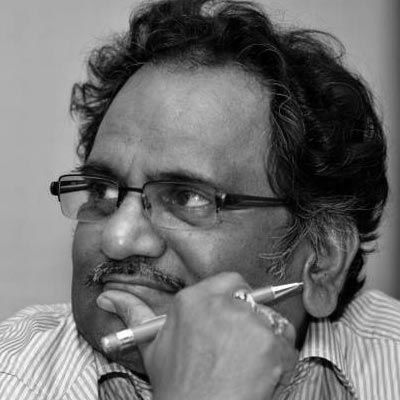Live
- Three persons admitted to hospital for diarrhea treatment
- First Star Outside Milky Way Captured: WOH G64 is 2,000 Times Larger Than the Sun
- Sikkim govt to constitute state Niti Ayog: CM Tamang
- CBI books Rajasthan narcotics inspector for Rs 3 lakh bribe
- Rajasthan bypolls: A tough contest between BJP and Congress
- Albania joins SEPA, paving way for EU integration
- Japanese government approves 250-billion USD economic package to ease price pain
- Six pharma companies to set up their units in Telangana
- The Unstable Events of a 17-Wicket Day in Perth: India vs Australia
- Dutch FM's Israel trip cancelled after Netanyahu's arrest warrant
Just In

The Central Information Commission felt that the Ministry of Home Affairs (MHA) is under an obligation to explain the logic or reason in neglecting the members of INA led by Netaji Subhash Chandra Bose and rejecting them the status of freedom fighters. The Commission directed the office of MHA to provide answers
The Central Information Commission felt that the Ministry of Home Affairs (MHA) is under an obligation to explain the logic or reason in neglecting the members of INA led by Netaji Subhash Chandra Bose and rejecting them the status of freedom fighters. The Commission directed the office of MHA to provide answers
An interesting and very significant issue was raised by Pradyot in a request for information under RTI Act. He sought information as to whether the members of Indian National Army, the British Indian Army personnel who participated in World War-II and captured by opposition forces, are freedom fighters or not, the official status of Indian National Army veterans as freedom fighters or army deserters, and, if so, the reason for such decision to be declared under Section 4 (1) (d) of RTI Act, 2005, co-terminus staff employed in the Secretariat under the respondent authority, policy/guidelines with regard to dealing of letter/complaint received from common citizen/public that is necessary to be disseminated under Section 4(1)(b),(c) of RTI Act, 2005, policy/guidelines or procedure adopted by public authority pertaining to records to maintained by the public authority, functioning and decision-making process of the public authority, etc.
The information sought was about the government’s policy/acts regarding the members of the INA (Indian National Army) led by Subhash Chandra Bose and their official status, certain clarifications on the action taken by the Government of independent India for the revocation of the social stigma attached to the INA veterans and a list of the INA veterans whose names have not been cleared by the government from being called army deserters.
PIO transferred the RTI application to CPIO, Ministry of Defence, which was further transferred to Department of Ex-Serviceman Welfare and finally to Ministry of Home Affairs. CPIO, National Archives of India, after receiving the RTI application, replied to the appellant on 17.12.2014, offering inspection in National Archives of India and cull out the desired information and documents. Dissatisfied by non-response, he approached the Information Commission.
Undoubtedly, the Indian National Army led by Nethaji Subhash Chandra Bose is a significant part of Indian independence struggle. The Wikipedia collected the following information about the INA and its saga in fighting British forces:
“Initially the Indian National Army was formed in December 1941. It was disbanded in December 1942 after disagreements between the Hikari Kikan and Mohan Singh, who came to believe that the Japanese High Command was using the INA as a mere pawn and propaganda tool. However, the idea of an independence army was revived with the arrival of Subhas Chandra Bose in the Far East in 1943. Bose was able to reorganise the fledgling army and organise massive support among the expatriate Indian population in south-east Asia.
INA had a separate women's unit, the Rani of Jhansi Regiment (named after Rani Lakshmi Bai) headed by Capt Lakshmi Swaminathan, which is seen as the first of its kind in Asia… Even when faced with military reverses, Bose was able to maintain support for the Azad Hind movement. Spoken as a part of a motivational speech for the Indian National Army at a rally of Indians in Burma on 4 July 1944, Bose's most famous quote was ‘Give me blood, and I shall give you freedom!’
In this, he urged the people of India to join him in his fight against the British Raj. Spoken in Hindi, Bose's words are highly evocative. The troops of the INA were under the aegis of a provisional government, the Azad Hind Government, which came to produce its own currency, postage stamps, court and civil code, and was recognised by nine Axis states—Germany, Japan, Italy, the Independent State of Croatia, Wang Jingwei regime in Nanjing, China, a provisional government of Burma, Manchukuo and Japanese-controlled Philippines. Recent researches have shown that the USSR too had diplomatic contact with the "Provisional Government of Free India." Of those countries, five were authorities established under Axis occupation. This government participated in the so-called Greater East Asia Conference as an observer in November 1943…”
The INA's first commitment was in the Japanese thrust towards Eastern Indian frontiers of Manipur. INA's special forces, the Bahadur Group, were extensively involved in operations behind enemy lines both during the diversionary attacks in Arakan, as well as the Japanese thrust towards Imphal and Kohima, along with the Burmese National Army led by Ba Maw and Aung San.
When Japanese funding for the army diminished, Bose was forced to raise taxes on the Indian populations of Malaysia and Singapore. When the Japanese were defeated at the battles of Kohima and Imphal, the Provisional Government's aim of establishing a base in mainland India was lost forever.
The INA was forced to pull back, along with the retreating Japanese army, and fought in key battles against the British Indian Army in its Burma campaign, notable in Meiktilla, Mandalay, Pegu, Nyangyu and Mount Popa.
However, with the fall of Rangoon, Bose's government ceased to be an effective political entity. A large proportion of the INA troops surrendered under Lt Col Loganathan. The remaining troops retreated with Bose towards Malaya or made for Thailand. Japan's surrender at the end of the war also led to the surrender of the remaining elements of the Indian National Army.
The INA prisoners were then repatriated to India and some tried for treason. Among the INA personnel, there was widespread disbelief, shock, and trauma. Most affected were the young Tamil Indians from Malaya and Singapore, both men and women, who comprised the bulk of the civilians who had enlisted in the INA. The professional soldiers in the INA, most of whom were Punjabis, faced an uncertain future, with many fatalistically expecting reprisals from the British.
The Indian soldiers in the British Indian Army, some two and a half million of whom had fought during the Second World War, were conflicted about the INA. Some saw the INA as traitors and wanted them punished; others felt more sympathetic. The British Raj, though never seriously threatened by the INA, tried 300 INA officers for treason in the INA trials, but eventually backtracked.“
The Ministry of Home Affairs was right in transferring the RTI application to the National Archives as far as records are concerned. But, the MHA should have taken responsibility to answer the question regarding revoking the social stigma attached to INA veterans, clarifying the doubt why they should not be considered as freedom fighters and whether MHA was ready to provide same benefits such as pension to the members of INA.
It is the duty under Section 4 of RTI Act to provide this information on its own. They naturally feel that they are undoubtedly soldiers and should have been recognised as freedom fighters. While other freedom fighters get pensions and other privileges from the Ministry of Home Affairs, they also deserve same respect. Other freedom fighters, if not recognised, do not suffer indignation as the INA Army members who face prosecution as ‘deserters’ of army.
The Prime Minister has recently declassified 33 files regarding Nethaji and released them to public domain, which are accessible in http://www.netajipapers.gov.in/. Subsequently more digitised files were released. After this, the National Archives of India also released 200 more digitalised files. All these can be researched by any interested citizen or researcher.
One interesting file about the Indian National Army reveals that the balance funds and property like gold, which was lying in Singapore Bank was handed over to Indian Government. These files do not have anything on the status of the members of Indian National Army.
The Commission felt that the MHA is under an obligation to explain the logic or reason in neglecting the members of INA led by Netaji Subhash Chandra Bose and rejecting them the status of freedom fighters. The Commission directed the office of MHA to provide answers to the above questions and inform the appellant about the policy, the decision and action on the RTI application filed by this appellant within 30 days. (Based on the decision of CIC, in Prodyot Kumar Mitra v. PIO, National Archives of India, CIC/CC/A/2015/001837 on 13th February 2017)

© 2024 Hyderabad Media House Limited/The Hans India. All rights reserved. Powered by hocalwire.com







